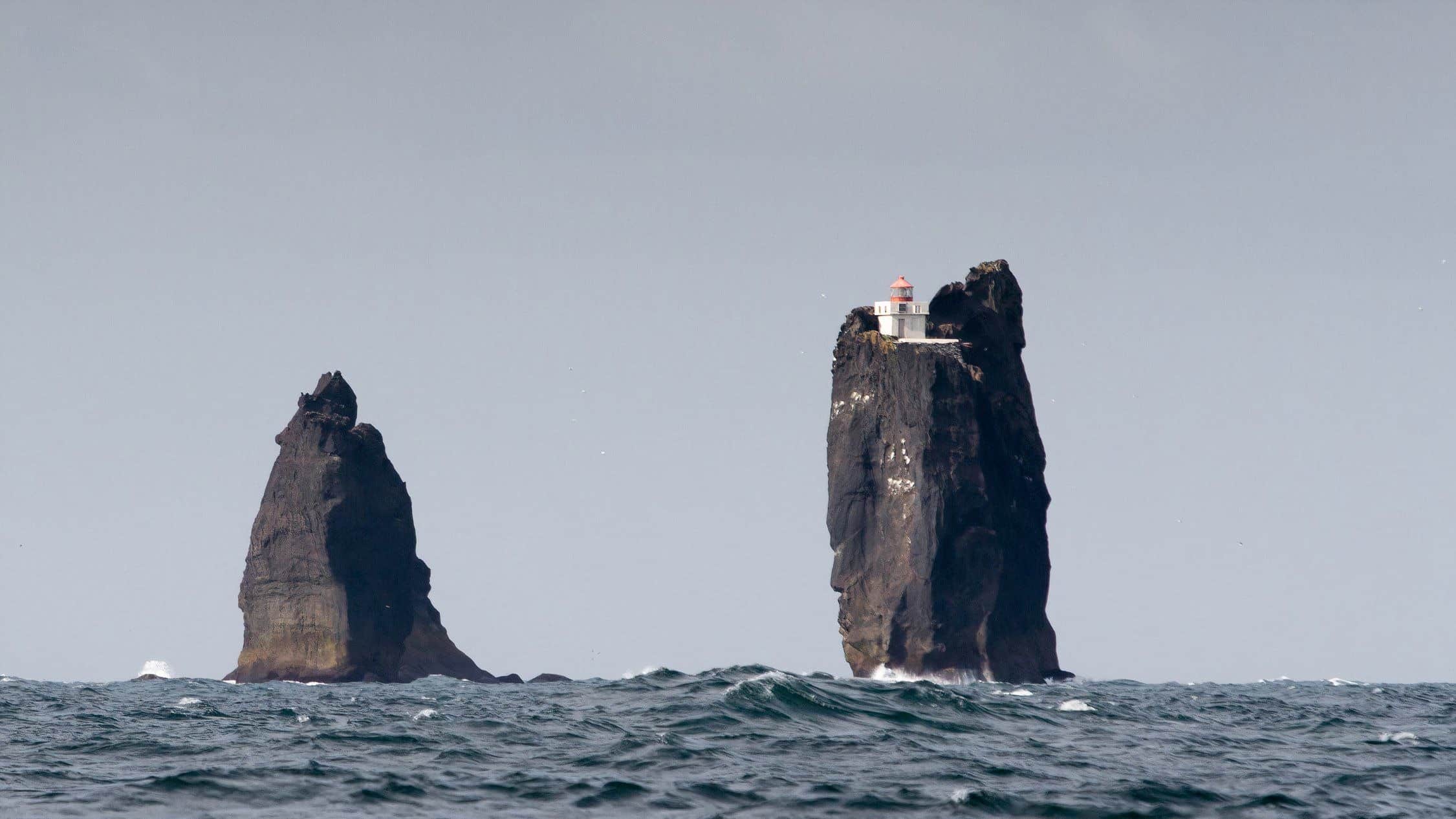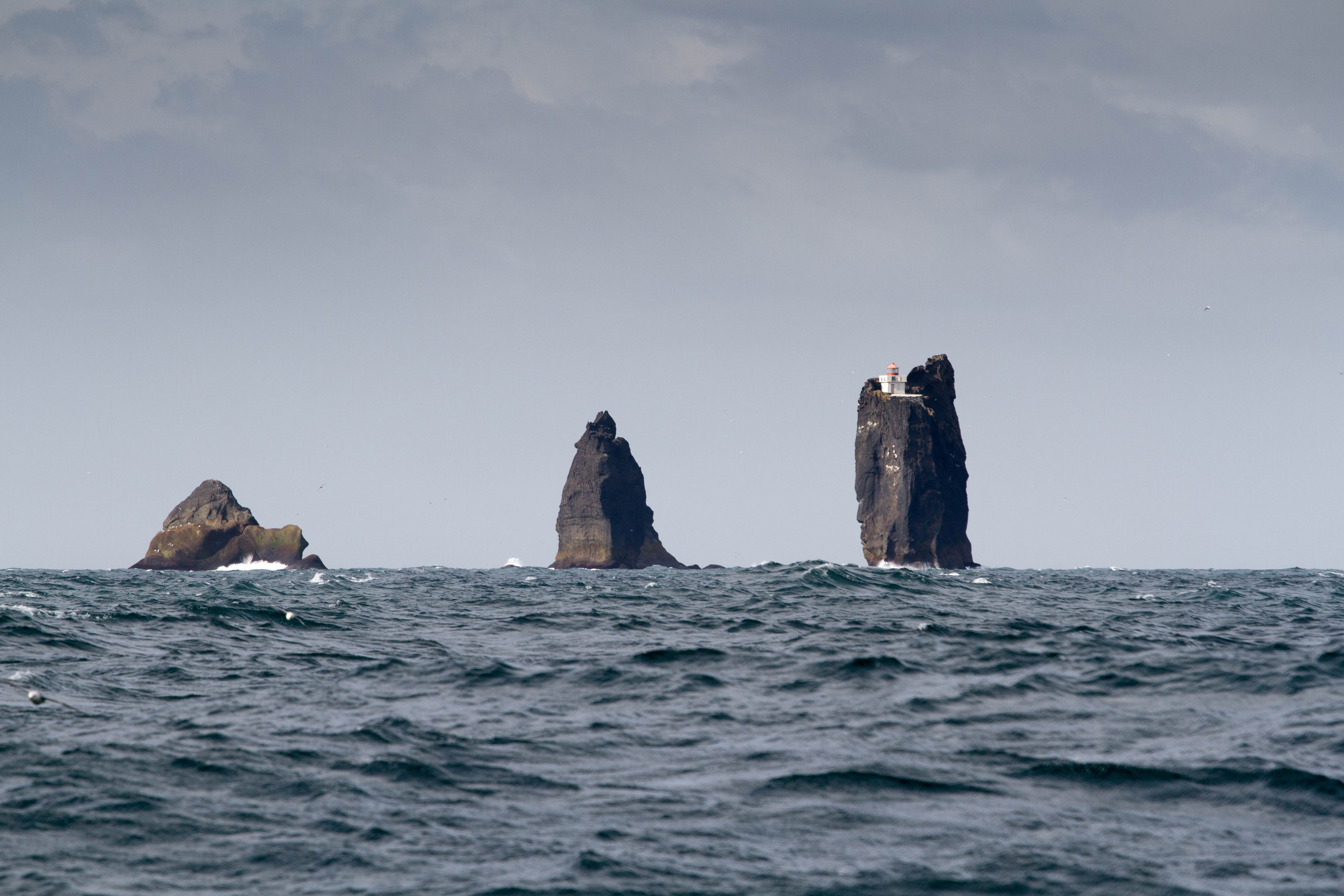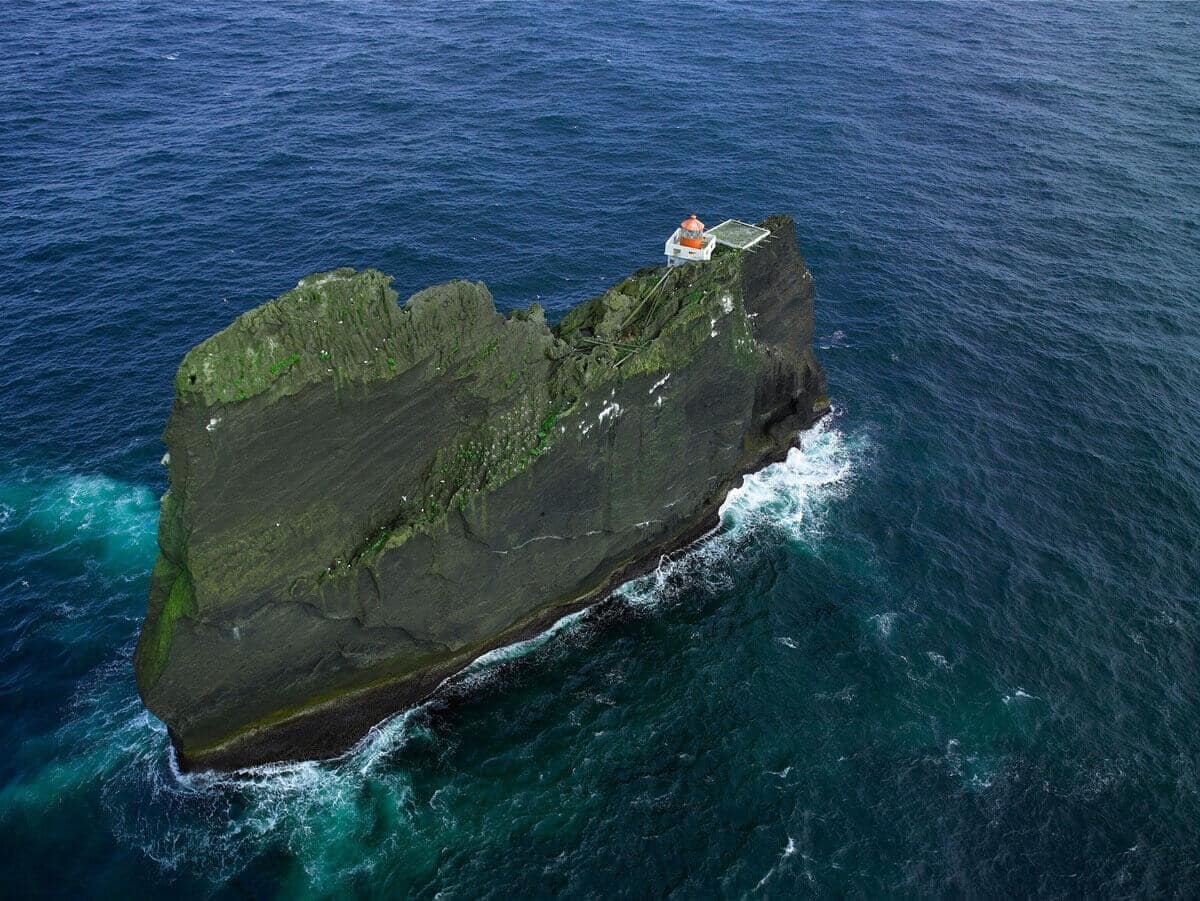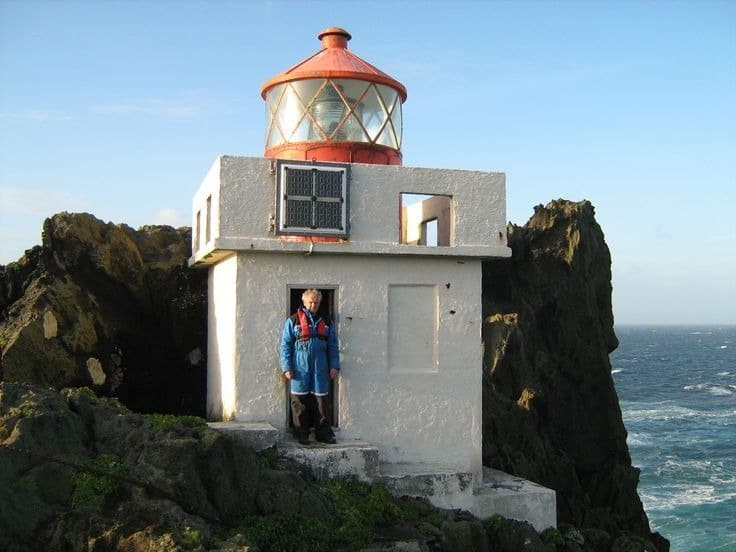Thridrangar Lighthouse – The Most Isolated Lighthouse In The World
Þrídrangaviti Lighthouse (transliterated as Thridrangaviti) is perched dramatically 7.2 kilometers off Iceland’s southwest coast amidst the Vestmannaeyjar archipelago.
The lighthouse is often hailed as one of the world’s most isolated beacons.
Its name, Þrídrangar, meaning “three rock pillars,” aptly describes the trio of sea stacks upon which it stands: Stóridrangur, Þúfudrangur, and Klofadrangur.

When Was The Lighthouse Built?
Thridrangar lighthouse was constructed between 1938 and 1939 on Stóridrangur under the visionary direction of Árni Þórarinsson.
It plays a crucial role in maritime safety by guiding ships through hazardous waters.

The Isolated Location Made The Construction Challenging
Stóridrangur rises dramatically 36.5 meters (120 feet) above the turbulent waters of the North Atlantic Ocean.
Its sheer cliffs and lack of natural footholds posed significant challenges to the construction crew.
The isolated location meant that traditional construction methods involving heavy machinery were impractical.

How Was It Built?
The Thridrangar lighthouse was built entirely by hand without modern machinery.
Árni Þórarinsson assembled a team of skilled mountaineers from the nearby Westman Islands.
These mountaineers are renowned for their expertise in navigating treacherous cliffs and rocky terrain.
They were tasked with the daunting challenge of erecting a lighthouse on a virtually inaccessible rock formation.

To build Thridrangar Lighthouse, the construction team faced daunting challenges scaling the sheer cliffs of Stóridrangur, off Iceland’s coast.
They began by creating a path up the cliff, using drills, hammers, chains, and clamps to secure their ascent.
As they neared the top, lacking any natural grip, they resorted to a risky method: one man knelt, another stood on his back, and a third climbed atop them to reach the cliff’s edge.
Living in tents on the rock for a month during construction, they endured harsh weather.
Electricity was installed three years later, and the lighthouse began guiding ships on July 5, 1942, during World War II.
A helipad was added in the 1950s to facilitate access for maintenance, ensuring the lighthouse’s vital role in maritime safety.

Technical Features
The lighthouse is a modest whitewashed concrete hut with a distinctive rooftop lantern.
It stands 30 meters above the restless North Atlantic Ocean.
Its light, visible from up to 16.7 kilometers away, flashes in a unique pattern—a long white followed by a short white flash every 30 seconds.

Is The Lighthouse Accessible?
Yes. The Thridrangar lighthouse is accessible only by helicopter.
While not open to the public, it is often maintained.
As visiting Þrídrangaviti might be a challenge, you can visit the nearby Westman Islands which offer a wealth of natural wonders—from volcanic landscapes to abundant wildlife, including puffins and seals.
The islands’ rich history is marked by volcanic eruptions and human resilience.

